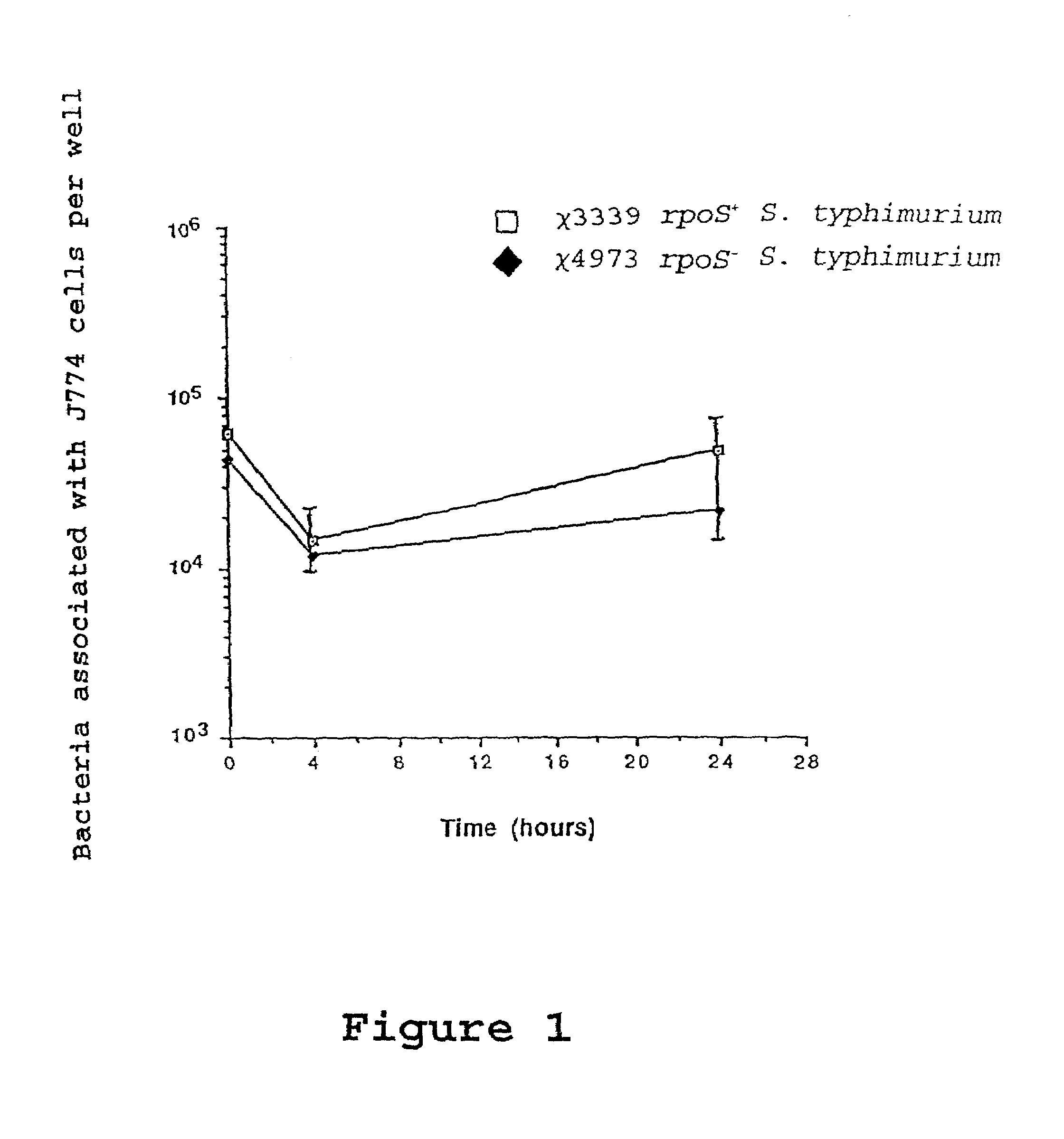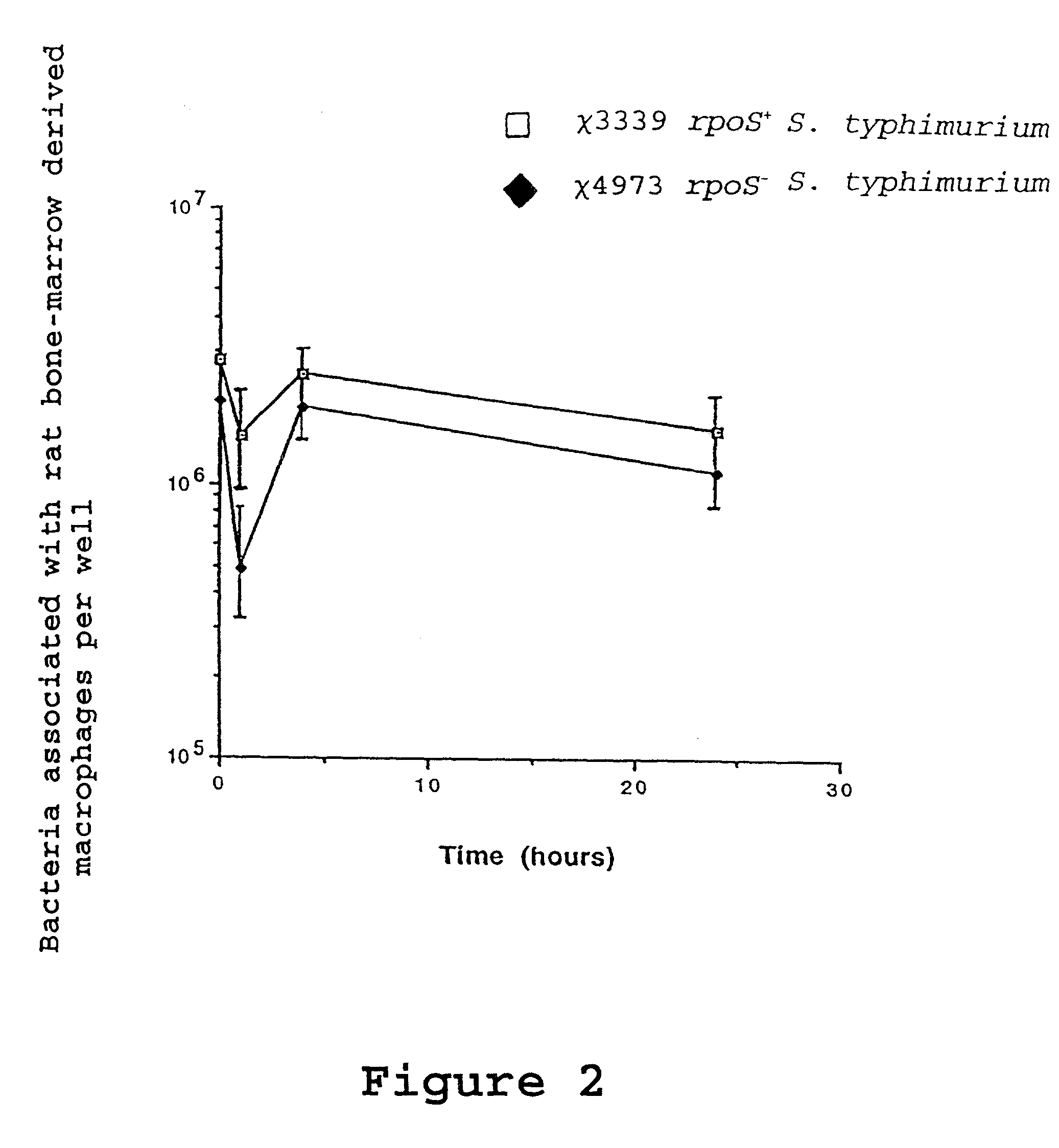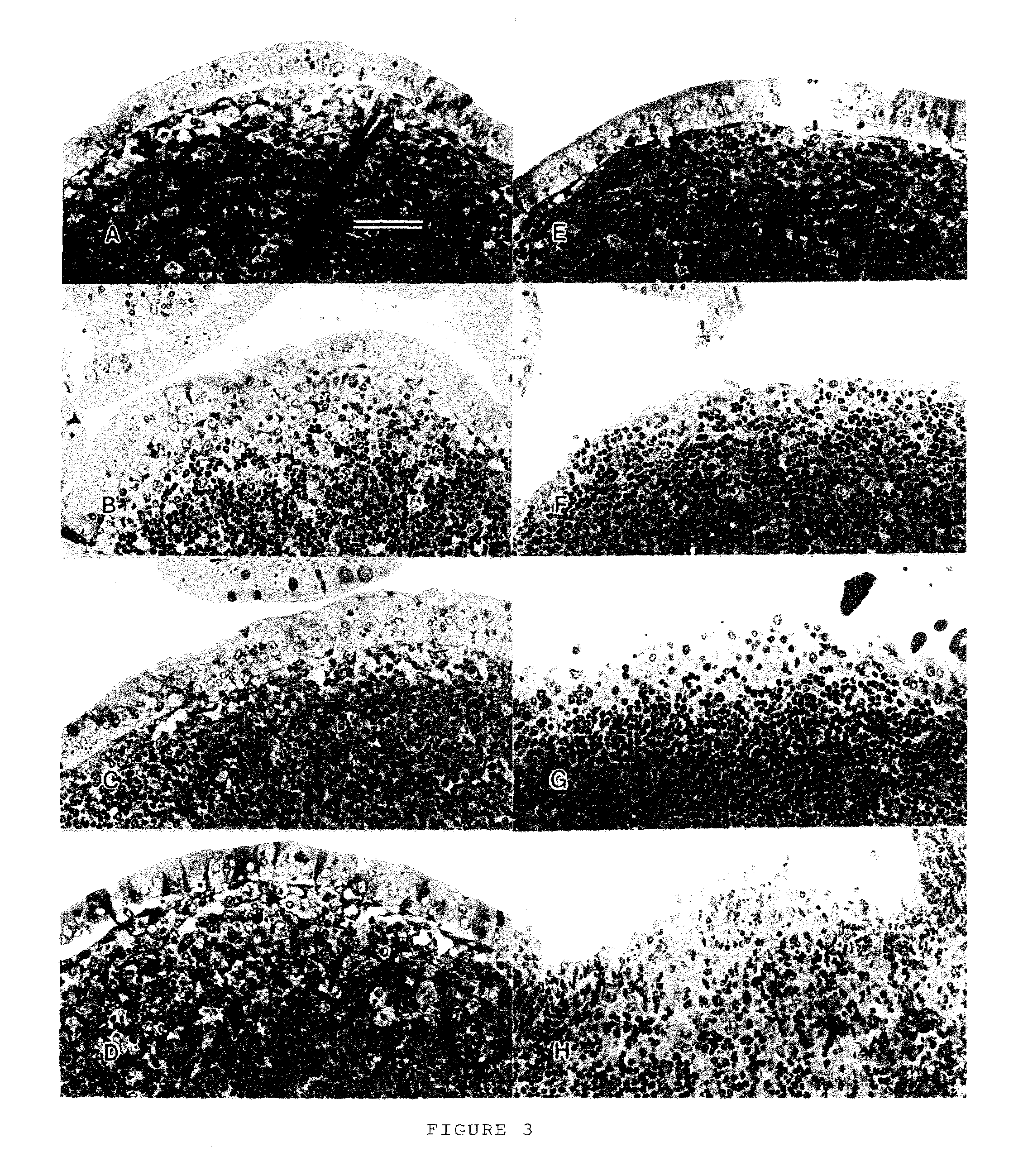Recombinant vaccines comprising immunogenic attenuated bacteria having RpoS positive phenotype
a technology of attenuating bacteria and recombinant vaccines, which is applied in the field of attenuating bacteria with rpos + phenotype, can solve the problems of not being able to achieve ideal balance, not being able to disclose the selection of vaccine strains, and not being able to recognize any of these references, etc., and achieves high immunogenicity, high immunogenicity, and efficient and inexpensive methods of delivery.
- Summary
- Abstract
- Description
- Claims
- Application Information
AI Technical Summary
Benefits of technology
Problems solved by technology
Method used
Image
Examples
example 1
[0105]This example illustrates the role of the rpoS gene in efficient invasion and colonization of the GALT by S. typhimurium using an rpoS mutant strain, χ4973, compared to its wild-type parent, χ3339.
Strain Construction:
[0106]χ3339 is a wild-type, virulent, animal-passaged isolate of S. typhimurium strain SL1344 described in Gulig et al. (Infect Immun 55:2891–2901, 1987). SF1005 is an rpoS::RR10 mutant derived from S. typhimurium strain ATCC 14028s and containing an ampicillin resistance gene linked to the rpoS::RR10 mutant allele (Fang et al., Proc. Nat'l. Acad. Sci., USA 89:11978–11982, 1992). The mutant rpoS::RR10 allele was moved into χ3339 using a P22HTint transducing phage lysate prepared on SF1005 and selecting for ampicillin resistance (Apr) due to the presence of the β-lactamase gene (bla) linked to the RR10 insertion in the rpoS gene. The allelic exchange between SF1005 and χ3339 was confirmed by Southern blot analysis, and the resulting χ3339 rpoS::RR10 mutant derivativ...
example 2
[0136]This example illustrates methods which can be used in constructing defined deletion mutations in genes to confer an attuation upon rpoS+ S. typhimurium and S. typhi strains as well as other bacteria suitable for use as vaccines for humans.
[0137]The generation of chromosomal deletions using transposon Tn10 has been previously described in a wide variety of bacteria, including Salmonella (Kleckner et al., J. Mol. Biol. 116:125–159, 1977; EPO Pub. No. 315,682; U.S. Pat. No. 5,387,744; which are incorporated by reference). Recently, new methods have become available for introducing specific mutations into genes. The gene to be mutated can be selected from a population of clones contained in a genomic DNA library constructed in a cloning vector, or by cloning the amplified product containing all or a portion of the gene into a plasmid using PCR methodology. Mutations introduced into such genes or portions of genes are known as defined deletions and these are constructed using one o...
example 3
[0157]This example illustrates the construction of defined ΔphoPQ23 and ΔasdA16 deletions in S. typhi ISP1820 and Ty2 to produce strains MGN-1191 and MGN-1256, respectively.
[0158]The construction of the defined ΔphoPQ23 ΔasdA16 S. typhi strains in both the ISP1820 and Ty2 backgrounds involved the use of two suicide plasmids, pMEG-213 containing the ΔphoPQ23 region and pMEG-006 containing the ΔasdA16 region.
[0159]The ΔphoPQ23 deletion was obtained by digesting pMEG-068 with EcoRV and TthIIII1 removing the 1103 bp EcoRV-TthIII1 fragment encoding the C terminal end of PhoP and the His region of PhoQ, responsible for phosphorylation of PhoP (FIG. 6). The linearized plasmid was then treated with T4 DNA polymerase and religated to produce pMEG-210 (FIG. 6). The BamHI-XbaI fragment of pMEG-210 containing the ΔphoPQ23 deletion was then inserted in the pir-dependent suicide vector pMEG-149 to produce pMEG-213 (FIG. 6). Since pMEG-213 is a mobilizable suicide vector encoding for the selectabl...
PUM
| Property | Measurement | Unit |
|---|---|---|
| optical density | aaaaa | aaaaa |
| time | aaaaa | aaaaa |
| optical density | aaaaa | aaaaa |
Abstract
Description
Claims
Application Information
 Login to View More
Login to View More - R&D
- Intellectual Property
- Life Sciences
- Materials
- Tech Scout
- Unparalleled Data Quality
- Higher Quality Content
- 60% Fewer Hallucinations
Browse by: Latest US Patents, China's latest patents, Technical Efficacy Thesaurus, Application Domain, Technology Topic, Popular Technical Reports.
© 2025 PatSnap. All rights reserved.Legal|Privacy policy|Modern Slavery Act Transparency Statement|Sitemap|About US| Contact US: help@patsnap.com



